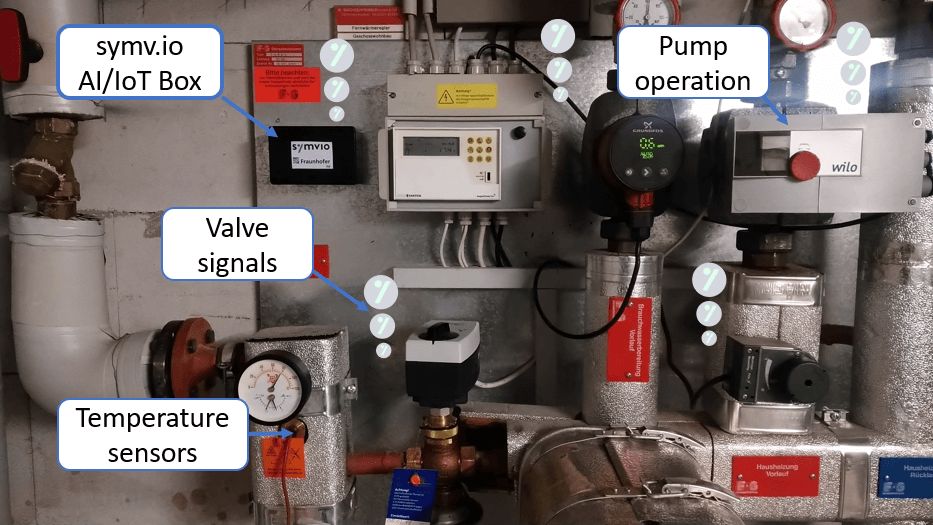| Duration: | 04/2021 - 03/2022 |
| Contracting Authority/ Sponsors: | Symvio SARL |
| Project Partners: | |
| Website: | AI4CITIES |
AI4CITIES – Development of an IoT-based Platform for Monitoring District Heating Stations
In the EU-funded "AI4Cities" project, leading European cities such as Amsterdam, Helsinki and Stavanger are coming together to search for solutions based on artificial intelligence (AI) for decarbonization in the areas of mobility and energy. For many cities, district heating is a central pillar in their decarbonization strategy. Continuous and automated monitoring of district heating substations can ensure energy-efficient and economical operation of district heating networks. With the help of Symvio's software solution, which is being developed in the AI4CITIES project together with Fraunhofer ISE, utilities and clients such as technical municipalities can better monitor and optimize the operation of their district heating connections and thus reduce energy consumption and save CO2.
The AI4Cities project aims to use AI to make Europe's cities more sustainable. Helsinki, Amsterdam, Copenhagen, Paris Region, Stavanger and Tallinn are currently working with consortia of startups and research institutions to find solutions to make their mobility and energy sectors more carbon neutral. For many cities, district heating is a key technology in this regard as it enables the generation of decarbonized heat. However, efficient operation of decentralized district heating substations is imperative for district heating networks to operate optimally in terms of energy and economy. In typical district heating networks today, heat generation is regulated, controlled, monitored and optimized with modern automation systems, but there is often a lack of transparency regarding the operation of the decentralized substations in the buildings themselves. In many cases, undetected errors and suboptimal control strategies lead to a degradation of energy efficiency and to a worsened economic efficiency for the energy supply companies and the end customer. For example, excessively high return temperatures from district heating transfer stations cause heat and efficiency losses in heat distribution or generation. To address these deficiencies, Symvio SARL and Fraunhofer ISE are co-developing an IoT and AI-based solution in the AI4CITIES project to help district heating operators and customers identify and prioritize problems in their network more efficiently and quickly. The focus is on monitoring district heating transfer stations, which the project will first measure using a novel IoT-based data logger. The data generated in this way will then be analyzed in a software tool using a patented AI solution for fault detection and diagnosis. This makes the current status of district heating transfer stations transparent, operators and customers can make data-driven decisions, and CO2 emissions are reduced.
The solution, developed by Fraunhofer ISE and Symvio, uses a patented AI method to continuously and promptly detect and identify faults in district heating transfer stations based on time series data from sensors, meters and actuators. Today, Symvio has a first prototype that was developed and tested in the first phase of AI4CITIES. In the process, Fraunhofer ISE adapted the algorithms for use in district heating networks on behalf of Symvio. In the second phase, the tool will be further developed and tested under real operating conditions based on the specifications and boundary conditions of the AI4CITIES cities. Above all, it is important to develop a convincing user interface so that the tool meets with broad acceptance. Furthermore, the IoT device will be implemented and tested in Phase 2 so that all components can eventually be brought together. At the end of the project, Symvio aims with Fraunhofer to roll out the developed solution in several cities and demonstrate its scalability and effectiveness in terms of CO2 savings.

